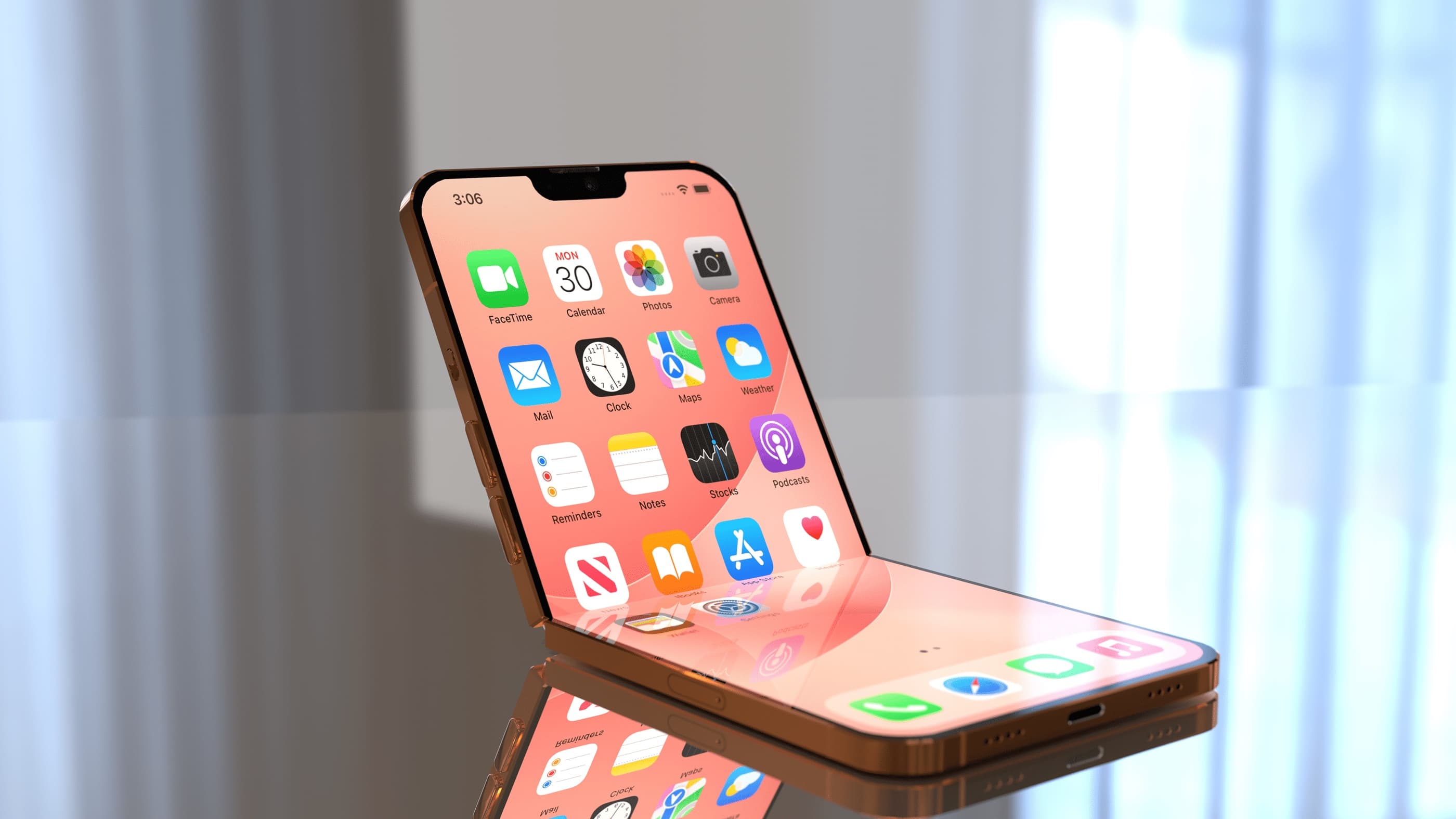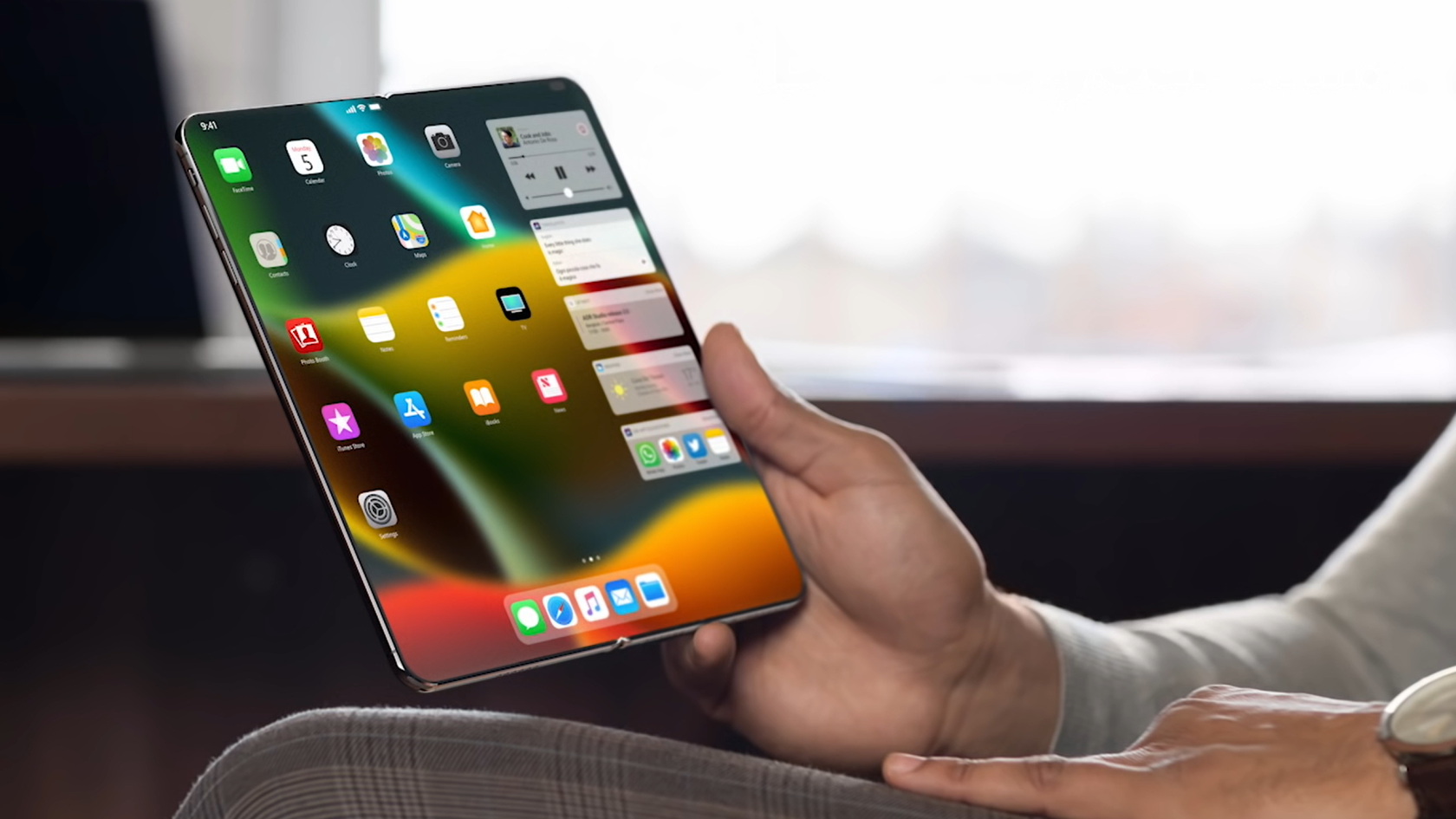Apple’s foldable iPhone could come with a protective self-healing screen
Scratches? What scratches?

If the rumors are to be believed, the main reason why Apple is yet to launch a foldable iPhone is that it hasn't managed to fashion a design that meets its high standards of quality and durability, but a new patent suggests the company may have made progress in that area by designing a folding screen that can heal itself when it's scratched or dented.
Dubbed Electronic Devices with Flexible Display Cover Layers, the patent (number 11991901), details how a foldable device’s screen could be comprised of three main parts: two rigid displays, and a flexible section that joins them. A self-healing element could be infused into this device, either across the entire display section or just in the flexible area. The former would offer more complete coverage against damage, but would presumably also be more expensive.
Although Apple doesn’t offer a huge amount of detail as to how exactly the self-healing property would work, the patent does suggest it could contain a “layer of elastomer.” This material is stretchable but can return to its original shape, which sounds like a useful aspect of a self-healing foldable display.
Another interesting tidbit in the patent is Apple’s assertion that the phone’s screen could heal itself “without prompting.” Yet the self-healing might also “be initiated or expedited by externally applied heat, light, electric current, or other type of external stimulus.” In this instance, the screen might contain transparent conductors that form a “heating layer” that warms the self-healing material so that it can repair itself.
Apple doesn’t limit itself to talking about foldable devices, and says the technology could be used in laptops, watches, a “pendant device” and other small products. It might not even find its way into foldables, as Apple argues that it would also be useful in a single rigid display, such as that of a computer.
Breakthrough technology?

We’ve seen Apple working on this tech before, and it could potentially be a major breakthrough for the company and its foldable efforts. The company is known to take a perfectionist’s stance on its new devices, but while this attitude has helped it build a reputation for quality, it also means it's less willing to launch a product that it does not deem to be significantly better than the competition (case in point: AirPower), which means it often sits on the sidelines while rivals move into uncharted territory.
Rather than rushing to market with a flawed product, Apple is happy to be patient and wait until it feels it has created a winning product, and this is more of an issues when it comes to folding devices, as their very nature means creases and damage to the screen are hard to avoid.
Get daily insight, inspiration and deals in your inbox
Sign up for breaking news, reviews, opinion, top tech deals, and more.
With this new patent, Apple might be able to have its cake and eat it. It would be able to produce a folding iPhone that not only resists damage to its screen – something that can be a problem for all phones, foldable or not – but can repair that damage itself, allowing users to avoid blemishes for longer.
It might also win Apple some brownie points with regulators at institutions like the European Union (EU), which has been taking a close look at the repairability of popular tech products. If Apple can say that its devices repair themselves, that might ease some of the pressure.
Given that this is a patent, there’s no guarantee that Apple will ever put it into an existing product. But the company has filed many patents concerning foldable technology, and plenty of rumors have surfaced claiming that devices are in the works, so don’t be surprised if it one day makes an appearance.
You might also like

Alex Blake has been fooling around with computers since the early 1990s, and since that time he's learned a thing or two about tech. No more than two things, though. That's all his brain can hold. As well as TechRadar, Alex writes for iMore, Digital Trends and Creative Bloq, among others. He was previously commissioning editor at MacFormat magazine. That means he mostly covers the world of Apple and its latest products, but also Windows, computer peripherals, mobile apps, and much more beyond. When not writing, you can find him hiking the English countryside and gaming on his PC.